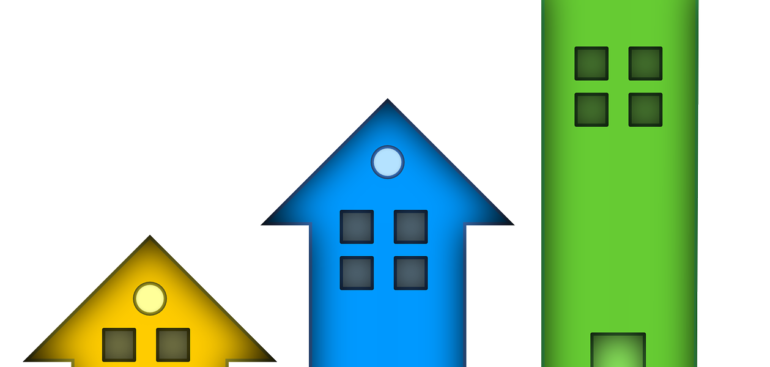How to decide if a reverse mortgage or home reversion is right for you
If you’re age 60 or over, own your home and need to access money, ‘home equity release’ may be an option.
There is risk involved and a long-term financial impact, so weigh up the pros and cons first. Get independent financial or legal advice before you go ahead.
How home equity release works
‘Equity’ is the value of your home, less any money you owe on it (on your mortgage).
‘Home equity release’ lets you access some of your equity, while you continue to live in your home.
For example, you may want money for home renovations, medical expenses or to help with living costs.
There are two types of equity release:
• Reverse mortgage
• Home reversion
The amount of money you can get depends
on:
• your age
• the value of your home
• the type of equity release
Your decision could affect your partner, family and anyone you live with. So take your time to talk it through, get independent advice and make sure you understand what you’re signing up for.
Reverse mortgage
A reverse mortgage allows you to borrow money using the equity in your home as security.
If you’re age 60, the most you can borrow is likely to be 15–20% of the value of your home. As a guide, add 1% for each year over 60. So, at 65, the most you can borrow will be about 20–25%. The minimum you can borrow varies, but is typically about $10,000.
Depending on your age, you can take the amount you borrow as a:
• regular income stream
• line of credit
• lump sum, or
• combination of these
How a reverse mortgage works
You stay in your home and don’t have to make repayments while living there. Interest charged on the loan compounds over time, so it gets bigger and adds to the amount you borrow. You repay the loan in full, including interest and fees, when you sell or move out of your home.
You may be able to make voluntary repayments earlier, if you wish. You may also be able to protect a portion of your home equity from being eroded by the loan. For example, to ensure you have
enough money left to pay for aged care.
What a reverse mortgage costs
The cost of the loan depends on:
• how much you borrow
• how you take the amount you borrow (for example, a lump sum will cost more due to compounding interest)
• the interest rate and fees (for example, loan establishment, ongoing fees, valuation)
• how long you have the loan
Use the reverse mortgage calculator
See how much a reverse mortgage would cost over different time periods, such as 10 or 20 years.
A lender will go through reverse mortgage projections with you, showing the impact on your equity over time. They will give you a copy of this to take away, so take your time to digest it.
Ask questions if there’s anything you’re not sure about.
Pros and cons of a reverse mortgage
Pros
• You remain owner of your home and continue to live in it.
• A small amount of money each year could supplement your income in retirement.
• A lump sum may fund renovations on your home so you can stay in it longer.
• You could free up money for an urgent need, such as medical treatment.
• It may help secure aged care accommodation until you sell your home.
Cons
• Over time, your debt will grow and your equity will decrease (see our case study below).
• Interest and fees compound and add considerably to your loan balance.
• The interest rate is likely to be higher than on a standard home loan.
• It could affect your eligibility for the Age
Pension.
• It could affect your ability to afford aged care.
• It could eat into money you need for future medical bills or home maintenance.
• You may not have enough money left for living expenses or to support family, if needed.
• If you’re the sole owner of your home and someone lives with you, that person may not be able to stay when you move out or die.
• If you are borrowing to invest, it puts your whole home at risk — not just the portion you are investing.
Negative equity protection
Reverse mortgages taken out from 18 September 2012 have negative equity protection. This means you can’t end up owing the lender more than your home is worth (market value or equity).
If you took out a reverse mortgage before this date, check your contract. If it doesn’t include negative equity protection, talk to your lender or get independent advice on what to do.
Home reversion
Home reversion allows you to sell a proportion (a ‘share’ or ‘transfer’) of the future value of your home while you live there. You get a lump sum, and keep the remaining proportion of your home equity.
How home reversion works
The home reversion provider pays you a reduced (‘discounted’) amount for the share you sell. Depending on your age, this may be 25% or more of the current value of the share. For example, suppose your home is currently worth $400,000 and you sell a 25% ($100,000) share of the future value.
The provider may only offer you $25,000 to $40,000 to buy that share. When you sell your home, you pay the provider their share of the proceeds. So, if in 20 years time you sell your home for $800,000, the provider gets 25% of that amount: $200,000.
What home reversion costs
It’s not a loan, so you don’t pay interest.
You pay a fee for the transaction and to get your home valued (as a guide, around $2,000). You may also have to pay other property transaction costs.
Home reversion costs you the difference
between:
what you get for the share of your home you sell now, and what it’s worth in the future.
The more your home goes up in value, the more you’ll pay the provider when you sell it.
Pros and cons of home reversion
Pros
• You sell a share of your home’s future value and continue to live in it.
• A lump sum may enable you to do renovations or maintenance on your home, so you can stay in it longer.
• You could free up money for an urgent need, such as medical treatment.
• It may help secure aged care accommodation until you sell your home.
Cons
• You will have a lower share of the equity in your home.
• It may be difficult to understand how the transaction works and what it will cost.
• It could affect your eligibility for the Age
Pension.
• It could affect your ability to afford aged care.
• It could eat into money you need for future medical bills or home maintenance.
• You may have less flexibility if your circumstances change.
• If you’re the sole owner of your home and someone lives with you, that person may not be able to stay when you move out or die.
Consider other options
If you need money, other options to consider include:
Government benefits — Check if you’re eligible for the Age Pension or government benefits.
No or low interest loan — Lets you borrow a small amount of money quickly for essential goods or car repairs. There are no fees.
Pension Loans Scheme — A non-taxable loan for pensioners to top up your government benefit payments, using your home as security. See the Department of Human Services or Department of Veterans’ Affairs for information.
Downsizing — If you’re thinking about selling your home and downsizing, consider the cost of buying and selling.
Check if it affects your government benefits.
Other support — If you’re struggling to make ends meet, see urgent help with money for free services that can help.
Get independent advice
Before making the decision to apply for a reverse mortgage or home reversion:
Get independent advice from a financial adviser or legal professional.
Ask the Department of Human
Services Financial Information Service how it will affect your pension or government
benefits.

Connolly Wealth Management
Level 1, 441 South Road
Bentleigh VIC 3204
(P) 03 9591 8000
(F) 03 9530 8375
(E) chris@connollywealth.com.au
(W) www.connollywealth.com.au
Disclosure: Christopher Connolly (280099) and Connolly Wealth Management Pty Ltd (333350) are Authorised Representatives of Wealthsure Financial Services Pty Ltd AFSL 326450.



